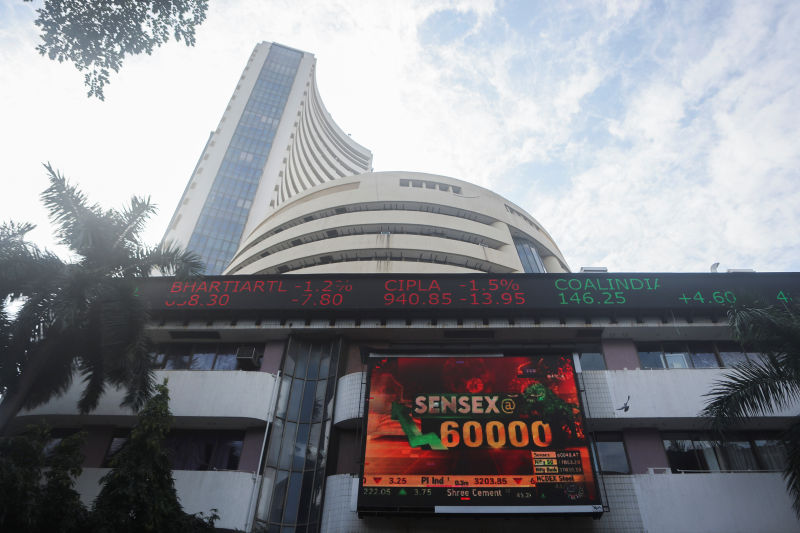Indian shares were set on Friday for their best year since 2017, buoyed by an economic recovery from the pandemic-fuelled slump and massive liquidity, even as a raging new Omicron variant kept investors cautious towards the end of the year.
The benchmark BSE Sensex delivered 20.7% in gains this year – far more than most other Asia-Pacific markets such as China, Hong Kong, Japan. The NSE Nifty 50 index was up 23.7% for the year.
Homewares maker Trident, brokerage Angel One, energy trader IEX and automotive software developer KPIT Technologies were among the country’s best-performing stocks, according to analysts.
“With inflation moving up and the Fed showing its intention to tighten liquidity, markets in the last couple of months have been a bit volatile with foreign investors being sellers almost on a daily basis,” Santosh Kumar Singh, head of research at Motilal Oswal Asset Management, said.
“Hence, 2022 is starting with an expectation of tightening liquidity, increasing interest rates and uncertainty around Covid-19 still remaining.”
India Combats Covid Surge
Indian authorities started to impose stringent rules on Thursday to prevent mass gatherings at New Year’s Eve parties and public venues to combat a surge in coronavirus infections.
The Reserve Bank of India’s latest Financial Stability Report suggests that pandemic scars on household balance sheets have become more evident, according to a Nomura report.
The report shows rising gross non-performing assets (GNPA) in banks’ retail books. According to the RBI, banking sector GNPA fell to 6.9% in September 2021 vs 7.5% in March 2021, much lower than the 13.5% suggested by July stress tests.
The central bank now expects GNPA to rise to 8.1% by September 2022 and 9.5% under severe stress.
Despite the fall in overall GNPA, the ratio for personal loans (10.5% of total GNPA) rose to 2.5% in September from 2.1% in March and 1.8% last year.
“Delinquency levels for consumer credit remained higher than a year back, with a bigger hit to public sector banks and fintech firms”, Nomura said.
- George Russell, with Reuters
READ MORE:
Foreign Carmakers Said To Be Eyeing Ford Plant in South India
Angry Women Force Change at Troubled Indian iPhone Plant
India’s SEBI Tightens Market Listing Rules Amid IPO Frenzy
























